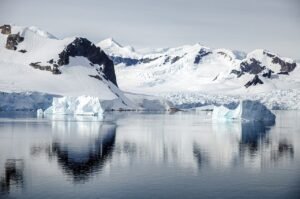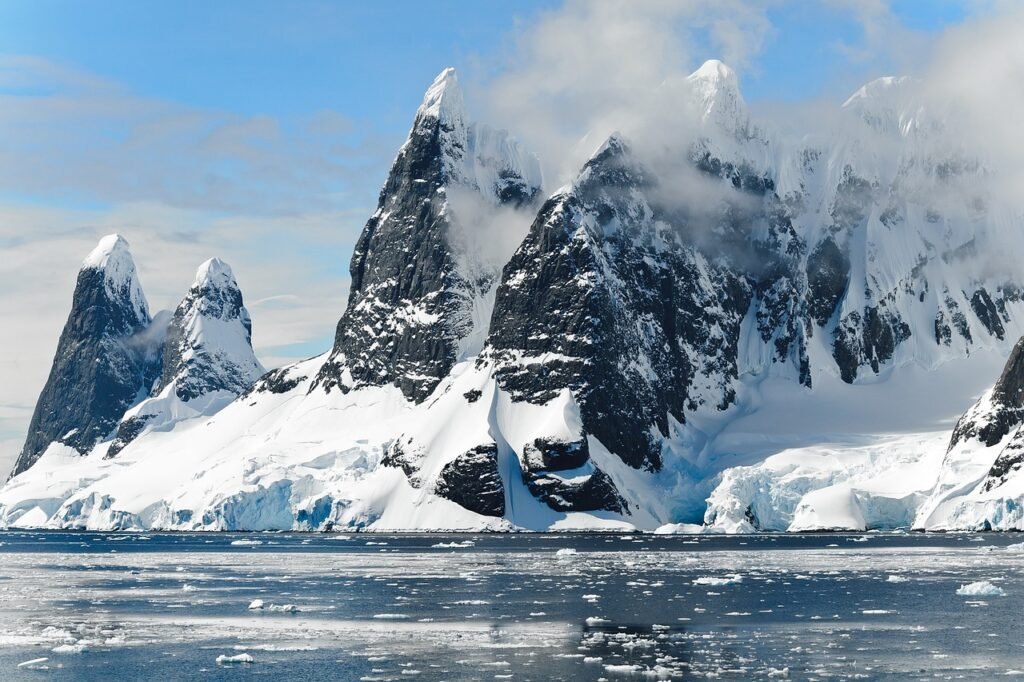In an extraordinary event, the world is witnessing the Earth’s Largest Iceberg (A23a) breaking free and embarking on a journey toward the Southern Ocean. Spanning almost 4,000 square kilometers (1,500 square miles), this Antarctic giant is approximately three times the size of New York City. Let’s delve into the details of this remarkable occurrence, exploring its history, technological implications, and the ecological significance of icebergs.
A23a: A Three-Decade Slumber Ends
A23a Earth’s Largest Iceberg, born from West Antarctica’s Filchner-Ronne Ice Shelf in 1986, has been immobile since its dramatic calving. Recent satellite images reveal a change in its status quo, as it swiftly drifts past the northern tip of the Antarctic Peninsula. British Antarctic Survey glaciologist Oliver Marsh notes the rarity of such an event, emphasizing the need for vigilant observation to understand its trajectory.
The driving forces behind A23a’s movement are the strong winds and currents propelling it toward the Southern Ocean. This sets the stage for its entry into the Antarctic Circumpolar Current, following the path colloquially known as “iceberg alley,” where similar mammoth ice structures roam.
The Mystery Unraveled: Why Now?
The question of why A23a is on the move after more than three decades remains a puzzle. Marsh suggests a gradual thinning over time, coupled with increased buoyancy, may be responsible for lifting it off the ocean floor. A23a’s status as one of the oldest icebergs adds complexity to this intriguing phenomenon, leaving scientists eager to uncover the secrets embedded within its ancient ice.
As A23a ventures into the unknown, concerns arise about the possibility of it becoming grounded again, potentially at South Georgia island. This scenario could pose a significant threat to the region’s wildlife, including seals, penguins, and seabirds that breed on the island and rely on the surrounding waters for foraging. The sheer size of A23a raises alarms about the potential disruption of critical access routes for these species.
Echoes of the Past: A68 and Lessons Learned
The situation with A23a Earth’s Largest Iceberg recalls the events of 2020 when another massive iceberg, A68, raised fears of colliding with South Georgia. The potential impact included the destruction of marine life on the sea floor and the disruption of essential food access. Fortunately, A68 eventually fragmented into smaller pieces, averting the impending disaster. A similar fate could await A23a, with the possibility of it breaking into more manageable chunks over time.
Despite the warmer temperatures in the Southern Ocean, A23a’s colossal size hints at its potential endurance over an extended period. Marsh underscores the risk of the iceberg traversing farther north, possibly reaching South Africa, where it could disrupt vital shipping routes. This scenario accentuates the far-reaching consequences of large icebergs in motion and emphasizes the need for ongoing monitoring and research to comprehensively understand their behavior and potential impacts on marine ecosystems and human activities.
The Evolution of Iceberg Studies
Understanding the context of A23a’s journey involves exploring the evolution of iceberg studies. The earliest observations date back to the age of exploration, with sailors encountering these colossal masses in polar waters. However, it wasn’t until the late 19th and early 20th centuries that systematic scientific studies began.
Norwegian explorer Fridtjof Nansen, a pioneer in iceberg research, conducted extensive studies during his Arctic expeditions in the late 1800s. Nansen’s work laid the foundation for comprehending sea ice and iceberg dynamics, contributing valuable insights to polar science.
The sinking of the RMS Titanic in 1912, after colliding with an iceberg, prompted international efforts to enhance iceberg monitoring and develop technologies to mitigate collision risks. Aerial reconnaissance and satellite technology later revolutionized iceberg studies, offering comprehensive insights into their movements and interactions with the environment.


Technological Marvels: Iceberg Monitoring Advancements
Technological advancements have played a pivotal role in enhancing our ability to monitor icebergs. Early methods relied on visual observations from ships and coastal stations, limiting data collection. However, aircraft equipped with cameras and sensors transformed iceberg studies, allowing for systematic surveys of polar regions.
Satellite technology marked a transformative phase in iceberg monitoring, providing high-resolution images of polar regions for continuous surveillance on a global scale. Remote sensing technologies, including radar and LiDAR, offered detailed information about iceberg topography and structural characteristics, overcoming limitations posed by optical imagery.
These technological integrations have facilitated the creation of comprehensive databases, contributing not only to maritime safety but also to our understanding of climate-related processes and the intricate interactions between icebergs and the polar environment.
Ecological Marvels: Icebergs Beyond Inert Masses
Beyond their appearance as inert masses, icebergs play a dynamic role in polar ecosystems. The melting of icebergs contributes to the formation of nutrient-rich plumes in the surrounding waters, fostering marine life. This phenomenon has led to the recognition of icebergs as “oases” in polar seas, supporting diverse ecosystems.
Studies have shown that icebergs transport minerals and nutrients from land to the ocean, influencing phytoplankton growth and supporting higher trophic levels. The microbial communities associated with icebergs further contribute to the cycling of nutrients, showcasing the interconnected nature of polar ecosystems.
Climate Change and Iceberg Dynamics
The movement of colossal icebergs like A23a also prompts reflections on the broader implications of climate change. The warming of polar regions contributes to increased calving events, releasing more icebergs into the oceans. Understanding the dynamics of these icebergs is crucial for predicting their trajectories, assessing potential risks, and mitigating the impacts on marine ecosystems and human activities.
Researchers are increasingly focusing on the role of icebergs in the context of climate change, exploring how their interactions with the ocean and atmosphere contribute to larger environmental shifts. The Antarctic region, in particular, is experiencing rapid changes, and the behavior of icebergs serves as a barometer of the ongoing transformations.
Conclusion: Awe and Apprehension
As the saga of A23a unfolds, the global community watches with a mix of awe and apprehension. This massive iceberg’s journey serves as a poignant reminder of the dynamic nature of Earth’s polar regions and the delicate equilibrium that exists between these frozen landscapes and the interconnected web of life that depends on them.
From the historical explorations of Nansen to the technological marvels of satellite monitoring, the evolution of iceberg studies reflects humanity’s ongoing quest to understand and coexist with the wonders of the natural world. A23a’s movement, shrouded in mystery, invites us to ponder the intricate dance between icebergs, climate change, and the ecosystems they influence.
As we navigate the uncharted waters of A23a’s journey, let us not only marvel at the spectacle but also reflect on the broader implications for our planet. The movements of colossal icebergs are not mere events; they are indicators of a changing climate and a call to action for the preservation of Earth’s polar realms and the diverse life they sustain.

